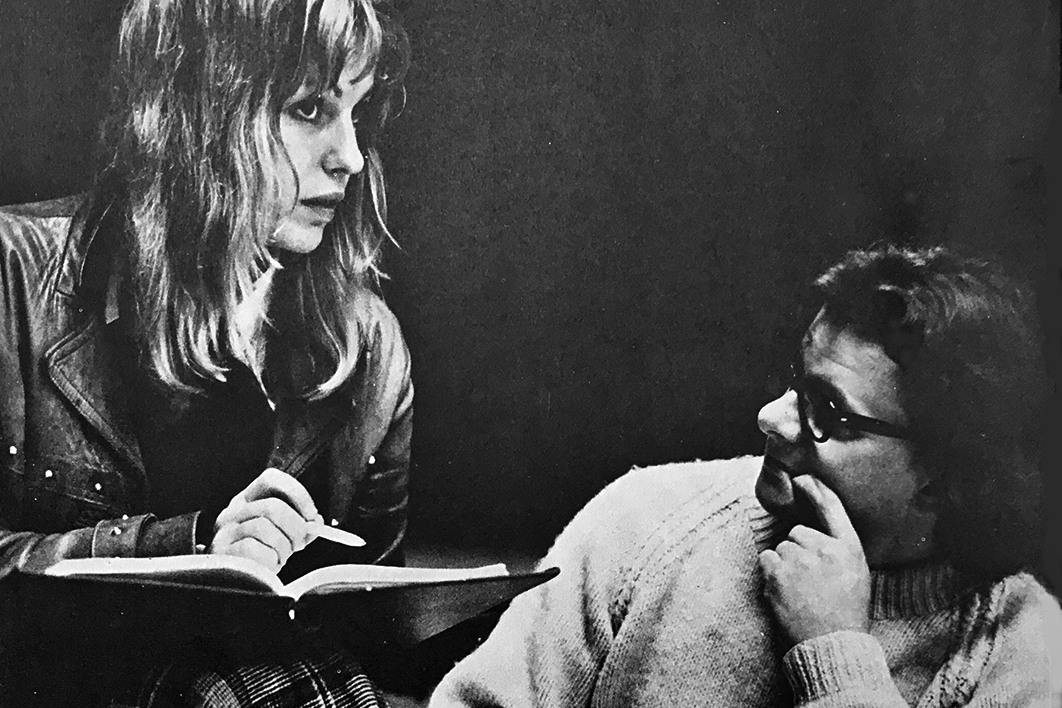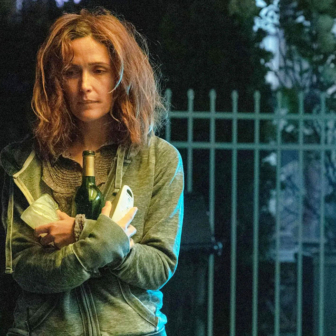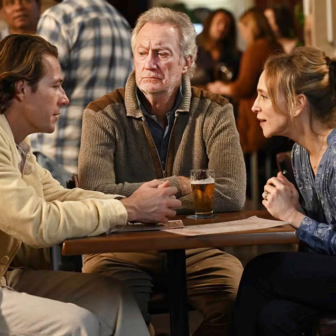In the decades before television was launched in Australia, dramatists were limited to writing for radio and amateur theatre companies. Only a few plays — notably the suburban-realist trailblazer The Summer of the Seventeenth Doll, which premiered in Melbourne in 1955 — were staged commercially, and just a handful of locally produced feature films appeared on cinema screens. Serious theatre was struggling and the feature film industry was effectively dead.
Television’s arrival in 1956 brought a fierce new competitor. Movie theatres closed around the country, further damaging the prospects for a local industry. But the new medium also laid the foundations of the 1970s revival of Australian filmmaking by training cinematographers, producers, directors, writers and actors and enabling them to develop professional careers at home. It also taught audiences to enjoy dramas about people like themselves, helping create an appetite for Australian feature films and the kind of theatre that emerged in the 1970s.
As they became aware of the opportunities likely to open up in television, many Australian writers headed to Britain to learn about the new medium first-hand. Some of Australia’s leading dramatists spent most of their careers in Britain or America: Sumner Locke Elliott, whose Rusty Bugles of 1948 foreshadowed the postwar theatre revival, spent the 1950s as a television writer in New York; and the authors of two other suburban-realist plays, Richard Beynon (The Shifting Heart, 1957) and Alan Seymour (The One Day of the Year, 1960), soon followed Ray Lawler to British television. Ralph Peterson was writing for stage and television in Britain in the early 1950s and Peter Yeldham headed there in 1956, convinced that prospects for television writers would be limited in Australia.
Writers who stayed home, meanwhile, struggled to teach themselves how to write in the new medium. Hugh Stuckey had been writing radio sketch material for years when he was asked to write comedy material for the television variety show Sydney Tonight in 1957. His training consisted of a visit to the studios and an explanation of the set and positioning of the cameras. Then he was sent home to write. Like other writers in early television, he watched how the American and British writers tackled the task — though they, too, were transferring skills learnt from radio.
Cliff Green was working as a schoolteacher in a Victorian country town when he wrote his first television script, Christmas at Boggy Creek (1963), based on a Christmas play he had written for his students to perform. He had sent it to the ABC as a potential radio play but they suggested he adapt it for television. At the time he had no access to a television — country Victoria had no television reception — so he relied on a BBC how-to-write-for-television book. “I did an adaptation of it and I sent that off and they made it,” he told me. “So here I was — first script produced!”
After writing the children’s series Riverboat Bill for the ABC and lots of educational scripts for the state education department, Green was snapped up by Crawford Productions, which was desperate for writers. In 1969, he made the big decision to give up the security of schoolteaching for the life of a television writer. With Yeldham and Eleanor Witcombe, he was to become one of the leading adapters of classic Australian novels for television.
Tony Morphett had more conventional literary ambitions, publishing three novels and writing plays while he did interviews for the ABC’s Talks Department and made documentaries for radio and television. On the strength of his published novels, he was awarded a Commonwealth Literary Fund grant to write another novel. But then he met the Welshman Glyn Davies, a veteran of British television, who went on to pitch a series based on Morphett’s novel Dynasty (1970) to the ABC. The series was a success and Morphett became a television writer.
“What I found, at the age of thirty-four, years ago, when I went out into the wide world from the ABC and stumbled into being a television drama writer, I found I loved it,” he said in an interview for the Australian Writers Foundation/Foxtel Oral History Project. “I loved the collaborative process. I didn’t at first; I was a monster! I wouldn’t let them change a comma. I would go to a read-through and give an actor line readings. I mean, I was a beast!”
Advertising was so closely allied to commercial radio and television that the shift from one industry to the other seemed logical. Ted Roberts, for example, was working as an advertising manager for Johnson’s Wax in 1968 when he was asked through friends to write the words for the theme music of the children’s series Skippy. He took the results to Lee Robinson at Fauna Productions, who suggested he try writing a script for the show and gave him a sample script to take home. When he turned up on Monday morning with his own script, Robinson was surprised but gave him a cheque on the spot. It was more than a month’s salary at Johnson’s Wax, so he quit his job to write for television. “I got into it by sheer accident,” he told me. “Sheer accident! And I loved it. I had no experience; I had no training; I had nothing. But I just sort of took to it somehow.”
Though the evolution of television drama is often discussed separately from developments in film and stage drama, the small screen played an important role in reinvigorating both art forms. By the end of the 1960s, with a new generation of actors and playwrights emerging from the universities and drama schools, stage drama had begun a resurgence. In Sydney, the conglomerate of drama interests around the University of New South Wales (the National Institute of Dramatic Art, the School of Drama and the Old Tote Theatre Company) set up a theatre in a disused church in Jane Street, Randwick, to produce new Australian plays. Its success was mixed until 1970, when Michael Boddy and Bob Ellis’s The Legend of King O’Malley energised its audiences with a mix of satire, music, vaudeville and some serious political comment on Australia’s rowdy history and its current involvement in the Vietnam war.
Histories of Australian drama refer to these developments in Australian theatre as the “New Wave,” marking its Sydney emergence with King O’Malley and the growing number of actors and producers studying at NIDA. Simultaneously in Melbourne, the Australian Performing Group grew out of small-scale experimental productions by university graduates at La Mama cafe and later the Pram Factory. This group of writers, actors and producers, influenced by the political crisis brought on by the Vietnam war, were determined to make theatre that was radical in its style and its politics.
This group, which included David Williamson, John Romeril and Jack Hibberd, participated in every aspect of production, sometimes acting in their own or each other’s plays and collaborating with other young creative people. They were aware of the history of Australian theatre and the importance of vaudeville and musical traditions in popular theatre, and some of their productions were agitprop or influenced by the plays of Bertolt Brecht and Samuel Beckett.
Plays like Jack Hibberd’s Dimboola (1969) and John Romeril’s The Floating World (1974) mined some of the same traditions that Boddy and Ellis employed in King O’Malley. Indeed, Dimboola and King O’Malley have remained popular, making them two of the most performed Australian plays in amateur theatre.
Much has been written about the New Wave drama of the 1970s and its revitalisation of Australian theatre. It seems important to emphasise that this drama was written by people who had encountered Australian television and participated in its production, and that the producers of stage drama and television drama were not separate groups of people.
What would the history of Australian drama look like if its list of the significant productions of the 1960s was broadened to include Charmian Clift’s television adaptation of My Brother Jack (1965) and Richard Lane’s of You Can’t See Round Corners (1967)? Looking at drama history that way would certainly extend the range and depth in the criticism of national attitudes evident in stage productions of the time. It might lead to a more sophisticated account of the development of realism as a dramatic style, rather than its simplistic dismissal as an outdated and conservative form.
The excitement of working in a new or revitalised industry in the 1970s was shared across stage, television and film. The writers, actors and producers of television drama were likely to see all the new local films and stage dramas. Some of them were also writing, acting in or producing these films and stage dramas.
When he became the ABC’s senior television drama producer in Melbourne in 1970, Oscar Whitbread went to every production of the Melbourne Theatre Company and the Australian Performing Group, keeping a look out for talent, particularly acting talent. As a result, APG actors appeared in many of the ABC’s televised playhouse productions in the 1970s, becoming familiar to much bigger audiences than they reached in the theatre.
One example of the interchange between television drama, film and the theatre was Whitbread’s casting of APG actors including Graeme Blundell and Kerry Dwyer in Cliff Green’s four-part drama Marion in 1973. When Peter Weir was seeking a screen adaptation for Picnic at Hanging Rock (1975) he approached an overcommitted David Williamson, who recommended Green on the strength of the scripts his APG colleagues had shown him. In this way, Green, the scriptwriter for children’s shows, Crawford’s Homicide and ABC miniseries adaptations, came to write the film generally regarded as the turning point for the New Wave of Australian filmmaking in the 1970s.
Tony Morphett, now known mainly as a television writer, co-wrote the screenplay for Weir’s second success, The Last Wave (1977). Weir hired him because he had seen Morphett’s television series Certain Women (1973) and wanted the writer to give the film a grounding in contemporary reality to support its more fantastic elements. Morphett commented that his television work effectively subsidised his writing for the film. In a similar way, Australia’s pre-eminent playwright, David Williamson, became better known to many Australians as the writer of Weir’s Gallipoli (1981) than for his stage plays.
These three writers, Green, Morphett and Williamson, were integral to the success of Weir’s early films, just as they were important to the development of quality Australian television drama. Weir himself had begun his screen career as a television production assistant on The Mavis Bramston Show.
Other television writers wrote the screenplays for the landmark Australian films Sunday Too Far Away (1975, John Dingwall) and My Brilliant Career (1979, Eleanor Witcombe). The training they received writing for television was an essential background to the revival of Australian film, and for most of them television provided the financial support that stage and film could not.
The development of the “New Waves” of Australian stage drama and Australian film occurred in tandem, pushed along by a range of social and political changes. Australian television was the third part of that New Wave — except that, of course, it was not a revival of a previously existing phenomenon but a new and rapidly changing technology. •
This is an edited extract from Susan Lever’s new book, Creating Australian Television Drama: A Screenwriting History, published this month by Australian Scholarly Publishing




